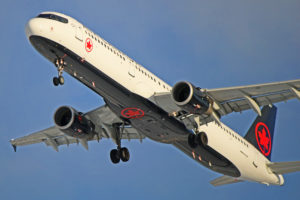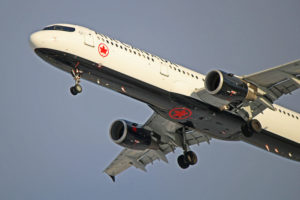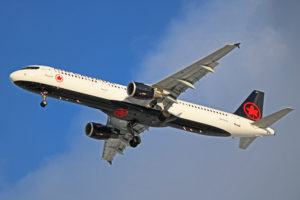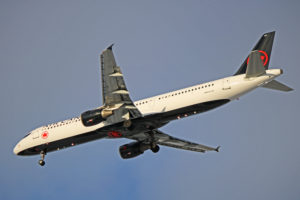 One of 15 Airbus A321-200 aircraft in the Air Canada fleet, and sporting the latest livery, we photographed C-GJWD on January 1, 2018 while plane spotting at Toronto Pearson International Airport (YYZ). The nearly 16 year old airliner is the Airbus A320’s answer to the Boeing 737-900ER.
One of 15 Airbus A321-200 aircraft in the Air Canada fleet, and sporting the latest livery, we photographed C-GJWD on January 1, 2018 while plane spotting at Toronto Pearson International Airport (YYZ). The nearly 16 year old airliner is the Airbus A320’s answer to the Boeing 737-900ER.
For full-sized, high resolution versions of any of the photos in the image gallery, simply click on the individual pictures. See below for more detailed information on C-GJWD, the Airbus A321-200 model in general and the airline.
Image Gallery
C-GJWD
Airbus A321-200
Air Canada
Resources
C-GJWD Air Canada Airbus A321-200 Image Gallery
C-GJWD
C-GJWD took its first flight on May 3, 2002 and was delivered to Air Canada on May 29, 2002. The Airbus A321-211 is configured for a maximum total of 190 passengers with 16 seats in business class and 174 more in economy class. As mentioned, this is one of 15 A321 variants in the main Air Canada fleet with five more flying for wholly owned subsidiary Air Canada Rouge.
The airliner had bird problems back on September 30, 2010 on a flight from Vancouver, British Columbia to Toronto, Ontario. The takeoff from YVR was rejected after a hawk struck the captain’s upper left windshield. It was enough to ground the aircraft and necessitate a replacement A321 to continue the flight.
On July 11, 2014, C-GJWD was flying from Calgary, Alberta to Toronto. About 270 miles east of Calgary, crew received a low yellow hydraulic system fluid indication. The aircraft was diverted back to Calgary for a safe landing. Hydraulic fluid was discovered to be leaking from the airplane.
Not long after, on September 19, 2014, the A321 was flying from Toronto to Vancouver. Climbing out of Toronto, a bleach odour was experienced in the forward cabin. The flight carried on but was ultimately diverted to Winnipeg, Manitoba after the smell caused two cabin crew to become unwell and unable to continue their duties. The odour was attributed to maintenance on a clogged drain prior to departure.
Airbus A321-200
The largest of the Airbus A320 Family, the Airbus A321 is 23 longer than the initial A320 variant, while sharing an identical wingspan and tail height. The first Airbus A321-100 was introduced with Lufthansa in March, 1994 but few of that variant were ever produced. The Airbus A321-200 was introduced with Monarch Airlines in April, 1997. Since, nearly 1,500 have been built.
The Airbus A321-200 is 45 metres or 146 feet in length with a wingspan of 36 metres or 118 feet. At the tail, the airliner stands 12 metres or 39 feet in height. The flight range is 5,950 kilometres. As mentioned, this is a direct competitor to the Boeing 737-900ER.
Air Canada
Founded in 1937 as Trans Canada Air Lines, the official name change came in January, 1965. Air Canada is headquartered at Montreal Pierre Elliott Trudeau International Airport (YUL). The airline is a founding member of the Star Alliance, along with Lufthansa, Scandinavian Airlines, Thai Airways and United Airlines. There are now 27 full member airlines in the alliance.
Air Canada has a main fleet of around 175 aircraft, flying to over 200 destinations. With subsidiaries included, those numbers grow to over 400 aircraft flying to 350 destinations worldwide. The largest in the fleet is the Boeing 777-300ER while the most numerous is the Airbus A320-200.
Resources




